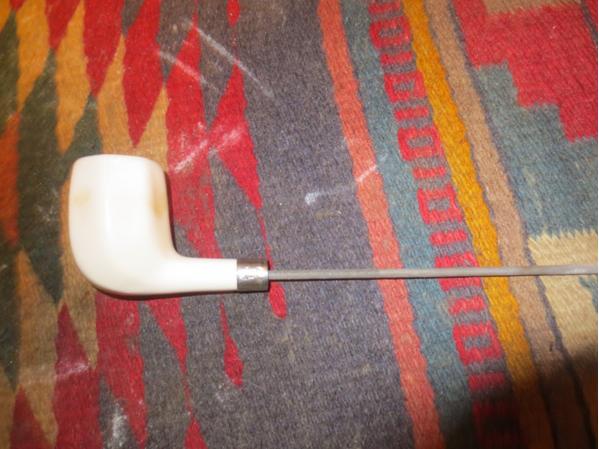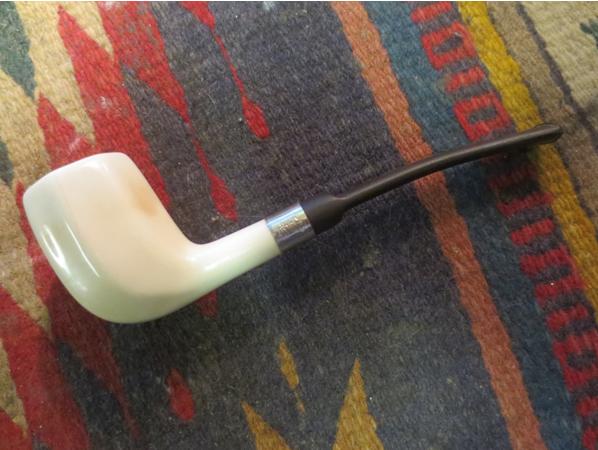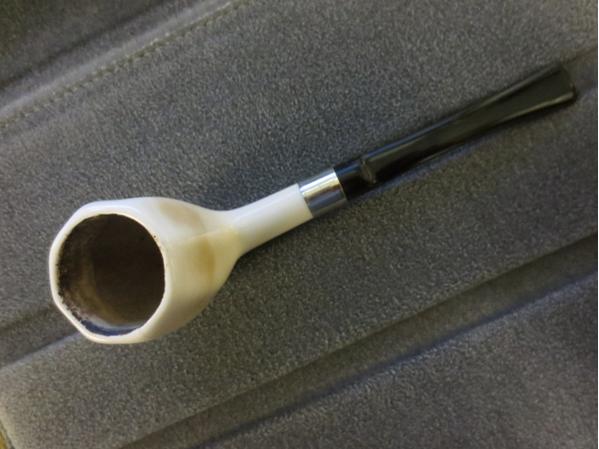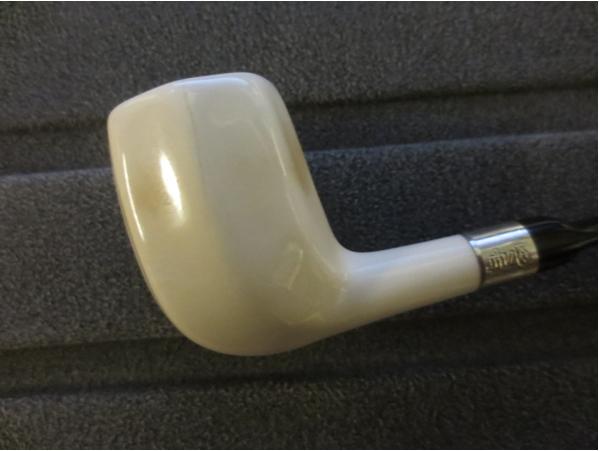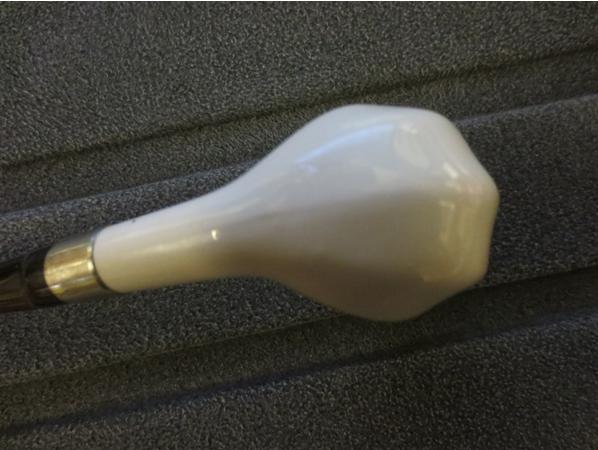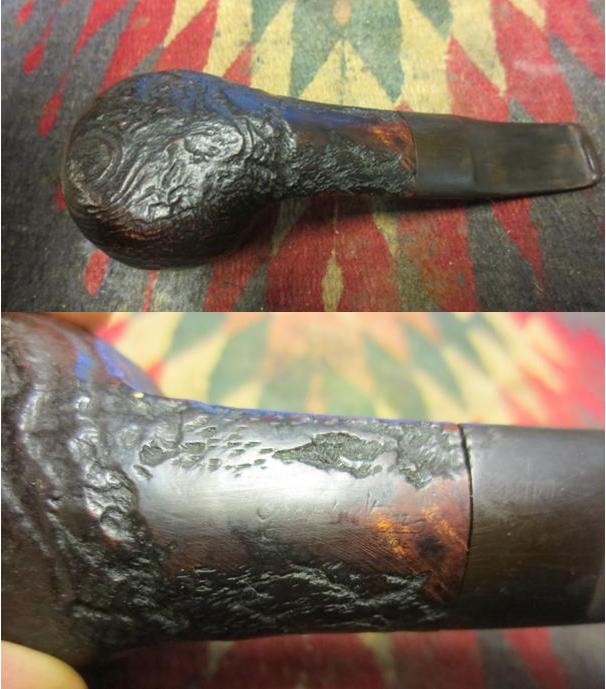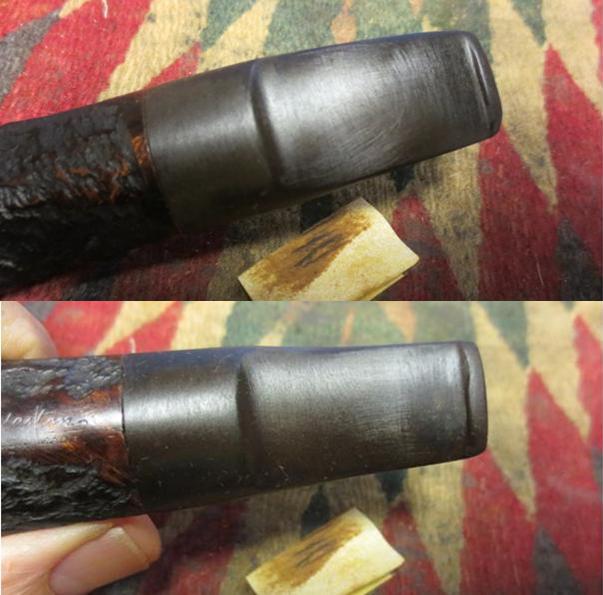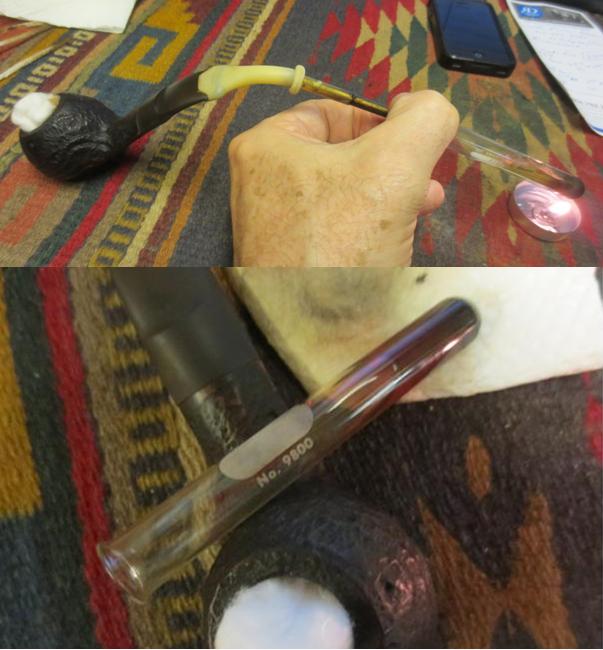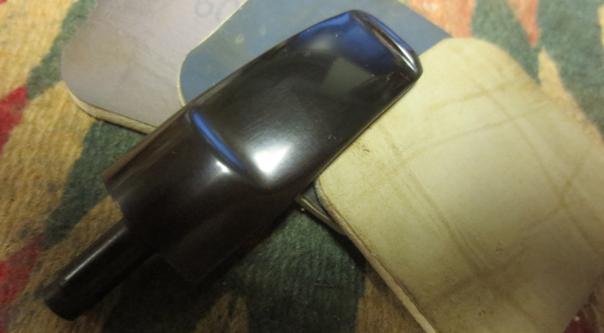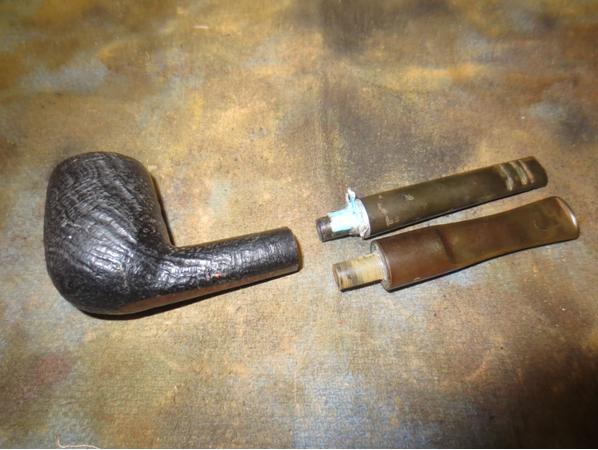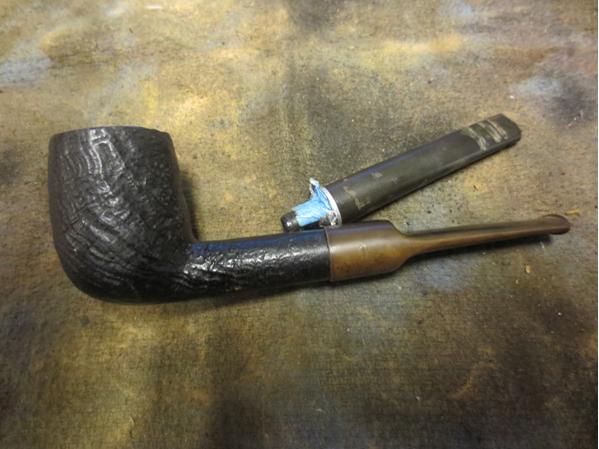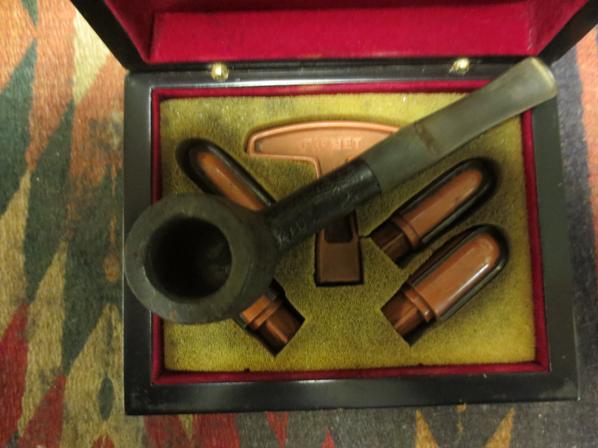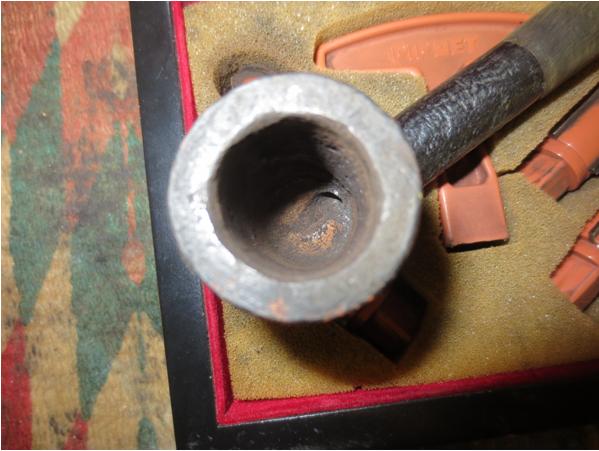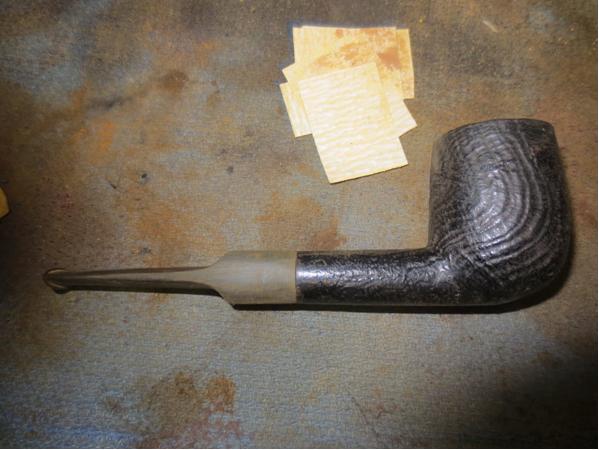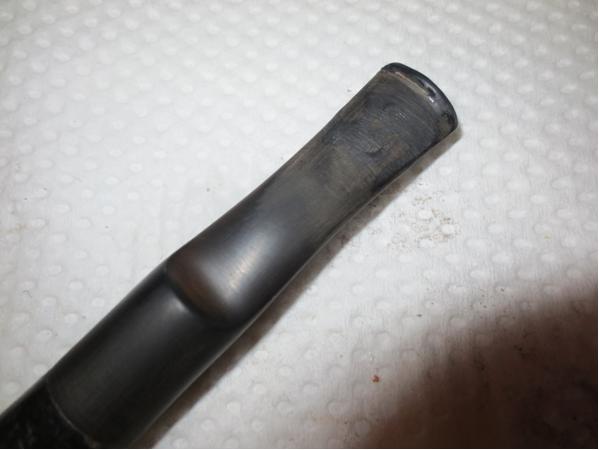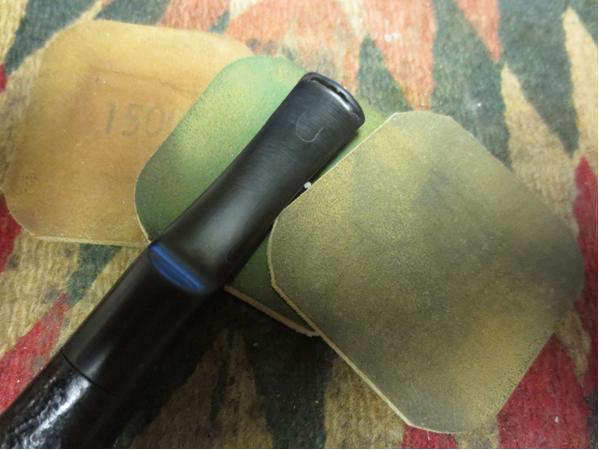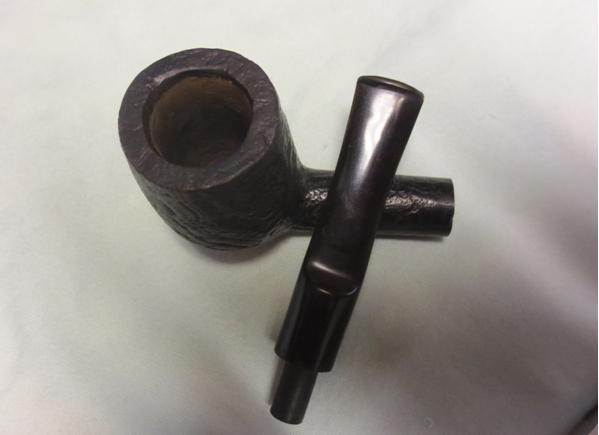Blog by Dave Gossett

 I’ve been working on a stain removal recipe/technique with some junker pipes and came up with this. It works pretty well. It will also strip the color out of any fills in the pipe and they will stand out afterwards. This is great for a fill free briar, but not recommended if it does, unless you plan on digging out the old fills and replacing them with briar dust. I always advise trying new repair and restoration tips on a test pipe before trying it on a keeper.
I’ve been working on a stain removal recipe/technique with some junker pipes and came up with this. It works pretty well. It will also strip the color out of any fills in the pipe and they will stand out afterwards. This is great for a fill free briar, but not recommended if it does, unless you plan on digging out the old fills and replacing them with briar dust. I always advise trying new repair and restoration tips on a test pipe before trying it on a keeper.
Step 1. Use Murphy’s wood soap to remove the wax. Take care not to get the Murphy’s soap inside the pipe!
Step 2. Wipe down with alcohol.
Step 3. Mix a heavy batch of Oxy Clean powder with hot water. 3 tablespoons give or take. Use just enough hot water to dilute the powder and then add a couple of shots of 91% alcohol. Heat the briar with a hair dryer before starting. This opens the pores and speeds up the removal process. (at least that’s my theory.)
0000 steel wool can be used with mix to gently scrub the briar. The steel wool is fine enough it will not scratch the briar. Use gently, let the wool do the work for you. A rag can be used but it will take a few runs to achieve the same results. When dipping the rag or wool don’t submerge to the bottom of the mix where the undissolved gritty powder is settled. You don’t want the grit on the briar when scrubbing. Stay clear of the stampings with the steel wool. Use a rag on those areas.
Rinse the stummel clean with tap water and towel off so the oxy residue doesn’t dry on the wood.
Let the stummel dry completely to see if you’re satisfied with the coloring. repeat the process again if it’s still dark.
Step 4. Depending on how much time and cleaning it took to remove the stain, it could raise the grain a bit. Don’t worry. Most of the time this isn’t the case. After the stain has been striped and the pipe has thoroughly dried, give the stummel a light dry sanding with 2000-3000 grit and this will take care of any raised grain concerns.
Step 5. Now your pipe is ready for your color change of choice or waxed up for a beautiful natural finish.
I tried to be as detailed as possible but may have forgotten something. This is why I recommend trying new techniques on a test pipe.
Here are the results of the stain removal on a very dark pipe.
Photos of the pipe before stripping the stain:


 Photo of the pipe with the stain stripped:
Photo of the pipe with the stain stripped: Photos of the finished pipe:
Photos of the finished pipe:

 ADDENDUM
ADDENDUM
Dave took the time to measure all of the components in his recipe and has sent them to be added to this post. Here it is:
1 cup hot water (hotter the better)
3 spoons of Oxy Clean powder
After the Oxy is thoroughly dissolved then add the alcohol
1 spoon of 91% alcohol
The alcohol cuts the suds and stops the solution from becoming a foaming mess while you’re working on the pipe.
Thanks Dave

























